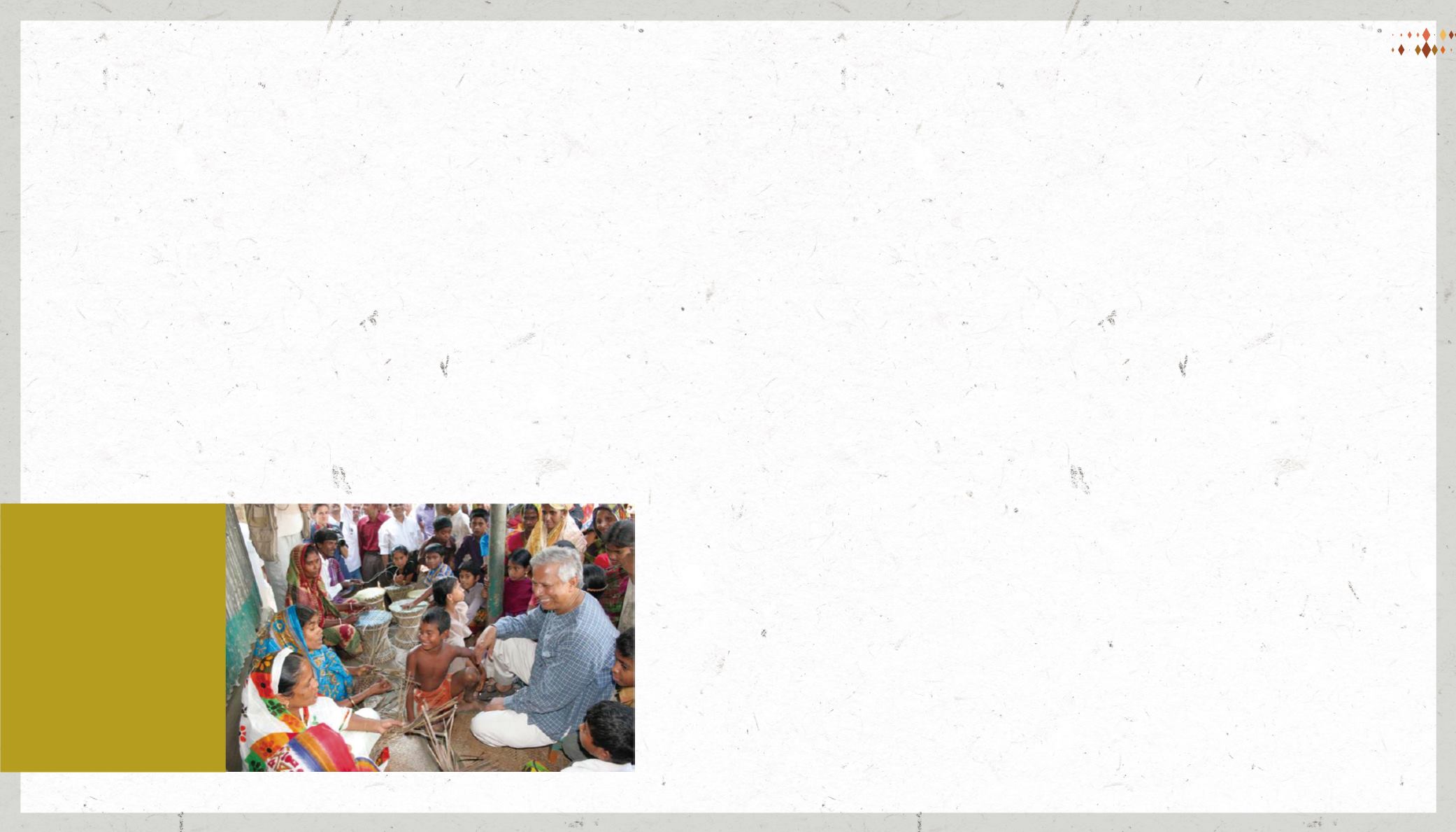
Grameen Bank is not just another lending
institution; it has its own unique operating
model. For instance, it offers loans to those
living below the poverty line, but in particular
women. But why, you may ask? Yunus
believes that women tend to be more family-
oriented, so if a woman is given money, she
will find ways to improve the whole family’s
living conditions.
Here is another example of Grameen’s
unique model: every loan taker is required
to form a solidarity group of five people,
who must not be related closely. The group
has to meet the bank on a regular basis. A
solidarity group allows members to act as
co-guarantors of repayment, and the regular
meetings help them broaden their social
network.
women to enjoy mobile phone service;
by providing energy generated from solar
panel electricity systems, he helped solve
the problem of electricity for nearly 70
percent of families in Bangladesh; and most
recently, he has partnered with Danone to
offer nutritious, low-priced baby food to
the underprivileged. Next, he is looking to
develop low-cost eye protection and online
video doctor consultation projects at rural
hospitals, which will allow for face-to-face
communications between villagers and
doctors from the city.
From the experiment in the village of Jobra
to being honoured with the Nobel Peace
Prize in 2006, Grameen Bank has offered
loans to almost seven million people from
73,000 Bangladeshi villages. Today, it is one
of the country’s biggest commercial bank. By
January 2015, it had loaned USD16.5 billion
to its clients, of which 97 percent are women,
with a repayment rate of over 98 percent.
Grameen Bank has broken the centuries-old
‘rule’ in banking by lending money to the
poor without requiring collateral. Over the
past three decades, it’s been proven that
in Bangladesh and many other countries
around the globe, the poor are actually more
credible than the rich.
Each client must also follow the Sixteen
Decisions, which include a set of values such
as providing education to children, keeping
children and the environment clean, and not
practicing child marriage. Yunus had once
said, “If it’s just about lending and collecting
loans,thenanyonecanruna lendingbusiness.
But what if it isn’t simply about money? We
need unity, friendship, understanding and
collaboration, and to care more about things
that are beyond money, such as hygiene,
health and child education – these issues are
not solved simply by money lending.”
Indeed, aside from running the credit
business, Yunus has also started a range of
charity projects in Bangladesh. He founded
Grameen Telecom, allowing over 400,000
Grameen’s model has now been adopted
in close to 180 projects in more than 100
countries. This model is not only suitable
for rural areas but also in cities. One
successful case would be Grameen America
(GrameenAmerica.org). In 2008, Yunus
founded Grameen America in Queens, New
York City, where he offered micro-loans
to immigrants and those living below the
poverty line without requiring collateral in
order to help them integrate into city life
and solve the city’s social problems. Today,
Grameen America has developed projects in
11 cities in the USA, benefiting over 50,000
women living in poverty.
Yunus believes that poverty should only
belong in the museum: when the day that
poverty becomes extinct on earth arrives,
we will have to build a museum of poverty
and take our children there, letting them
understand that poverty had once existed
among humans. It should be similar to how
we go to museums to see dinosaurs now;
they once walked the earth but today, only
tales remain.
7
6
University Lecture on Civility


